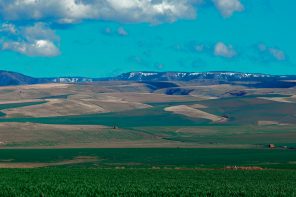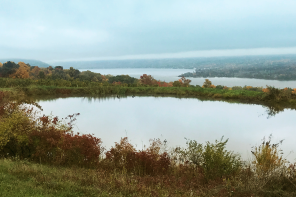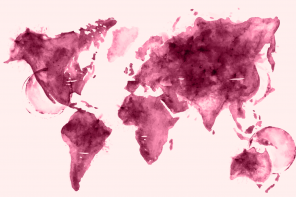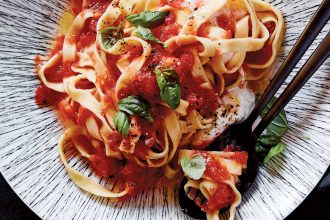When wine lovers head to the West Coast, Washington’s Yakima Valley most likely isn’t competing with Napa for top destination on their list. There’s a good chance it doesn’t even make it. Sure, it doesn’t fall into the postcard view of either wine country or the water-flanked Pacific Northwest, but Yakima Valley, sprawling east of the Cascades, is the destination oenophiles didn’t know they needed to discover.
Unlike Seattle, with its tech, Teslas and ubiquitous drizzle, the Yakima Valley is primarily arid desert. Known as the “dry side,” eastern Washington might not have the bustling metropolis, but its soil is loamy (consisting of mostly sand, silt and some clay) and its weather temperate make it the ideal place for growing, well, anything.
Alongside stunning views of local crown jewels Mount Rainier and Mount Adams, the area is home to more than 120 wineries and 17,000 acres of producing vineyards — the largest concentration of wineries and vineyards in the state. Not only can it boast being home to some of the state’s oldest vineyards, but almost all of the state’s top winemakers get at least some of their grapes from the area.
This is in part thanks to early settlers who arrived and thought, “Hey. This place is gorgeous. You know what would make looking at mountains even better? A drink.” The Hudson’s Bay Company planted the first grapes at Fort Vancouver in southeast Washington in 1825. However, eastern Washington’s wine scene didn’t really kick off until 1903, when large-scale irrigation allowed growers to take full advantage of the locations. Italian and German varietals were welcomed into the Yakima Valley, though the range has significantly expanded in the following years.
Since the 1960s when commercial-scale plantings were introduced, Washington has experienced a rapid growth in wineries with quality to rival those of bottles coming from California. Hit Interstate 82 between Yakima and the Tri-Cities and you’ll find yourself cruising along nearly 70 miles worth of vineyards and tasting rooms.
More than 40 varietals now abound — meaning repetition is one thing you won’t have to worry about — but the main players are Chardonnay, Riesling, Merlot, Cabernet Sauvignon and Syrah. If you want something a little less traditional, you won’t have to search hard to find the likes of Carménère, Mourvèdre or Orange Muscat. The best part? Tasting fees are often quite low, and extraordinary wines tend to be priced much more reasonably than those from other big shot producers, even though many of the vineyards have received awards.
The area is not a one-hit wonder, however, and devotes itself to more than just wine. You’ve got hops, you’ve got apples (as a born and bred Washingtonian, I can say how strongly we feel about our apples), you’ve got a Darigold dairy plant that produces a gluttonous amount of cheese. You’ve got spearmint, peppermint and nearly any fruit or veggie you could crave. Basically, you’ve got a wealth of locally grown food to pair with your new favorite bottle.
And if that’s not enough for you, then just stop by for the views. Seriously. Somehow, Chardonnay just tastes better when it’s paired with some of the country’s most stunning vistas.








